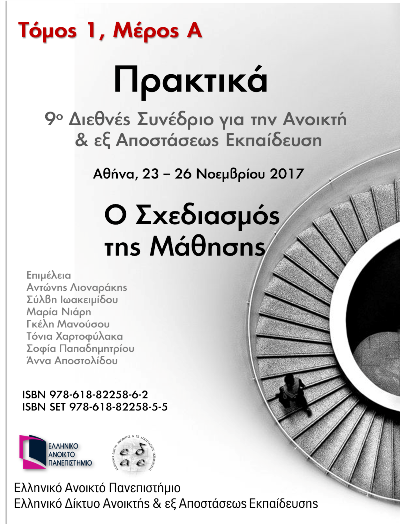Η αναγκαιότητα ύπαρξης δια ζώσης Ομαδικών Συμβουλευτικών Συναντήσεων (ΟΣΣ) σε προγράμματα Ανοικτής και εξ αποστάσεως Εκπαίδευσης (ΑεξαΕ)

Περίληψη
Οι Ομαδικές Συμβουλευτικές Συναντήσεις αποτελούν μία διαδεδομένη στρατηγική υποστήριξης των φοιτητών ΑεξαΕ, που έχει λιγότερο ή περισσότερο υιοθετήσει η πλειοψηφία των αντίστοιχων εκπαιδευτικών ιδρυμάτων διεθνώς, με προαιρετικό ή υποχρεωτικό χαρακτήρα. Η συμβολή τους στην ακαδημαϊκή, συναισθηματική και συστημική υποστήριξη των εκπαιδευομένων έχει τόσο υποστηριχθεί από θεωρητικούς της AεξαE, όσο και τεκμηριωθεί από διεθνείς εμπειρικές μελέτες. Από την άλλη υποστηρίζεται ότι οι ΟΣΣ νοθεύουν την καθαρότητα της ΑεξαΕ, η οργάνωση και διαχείριση τους αποδεικνύεται ιδιαίτερα απαιτητική και δαπανηρή, ενώ η παρακολούθησή τους δημιουργεί συχνά δυσκολίες στους εκπαιδευόμενους, ιδιαίτερα σε ορισμένα γεωγραφικά και πολιτισμικά πλαίσια. Συχνά, εξάλλου, οι διδάσκοντες δεν διαθέτουν τις αναγκαίες γνώσεις για τη διεξαγωγή τους. Στο πλαίσιο αυτό έχουν γίνει από διάφορα ιδρύματα διεθνώς απόπειρες, εστιασμένες τα τελευταία χρόνια στην αξιοποίηση σύγχρονων τεχνολογικών μέσων και διαδικτύου, να περιορίσουν τις ΟΣΣ. Μολονότι η διαδικτυακή υποστήριξη έχει αναδειχθεί από αρκετές μελέτες σε ισοδύναμη σχεδόν με τις ΟΣΣ και παρουσιάζει πλεονεκτήματα, που συνδέονται κυρίως με την άρση χωροχρονικών και άλλων περιορισμών πρόσβασης, η αποτελεσματικότητά της έχει αμφισβητηθεί, κυρίως λόγω της έλλειψης εκπαίδευσης αναφορικά με τις πτυχές μιας αποτελεσματικής διαδικτυακής αλληλεπίδρασης. Αντίθετα, τα μικτά προγράμματα φαίνεται να συνδυάζουν τα θετικά στοιχεία και των δύο μοντέλων, αναιρώντας ταυτόχρονα τα όποια μειονεκτήματά τους.
Λεπτομέρειες άρθρου
- Ενότητα
- Άρθρα


